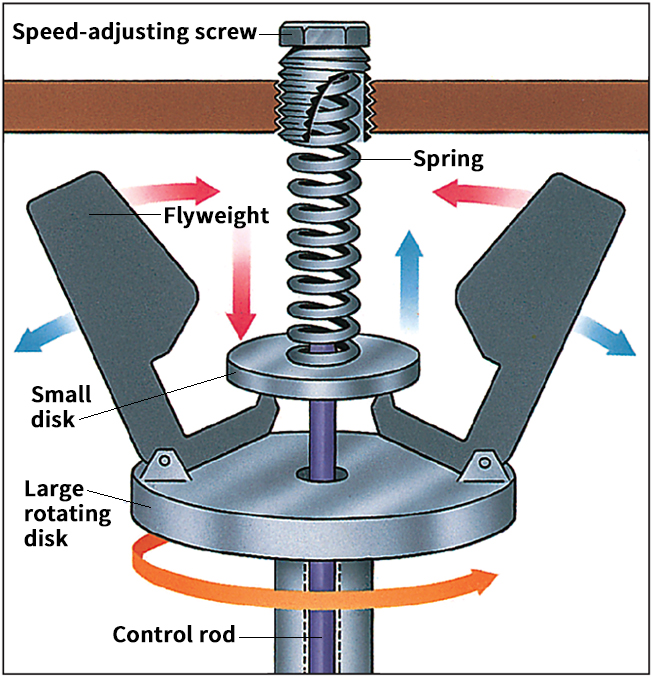Governor is an instrument that keeps machines running at desired speeds. Governors are used on some automobiles and trucks to limit their speeds. They are also used to keep industrial machinery and some electric motors running at proper speeds. Most governors regulate the speed of a machine by controlling the flow of electricity or of a fluid, such as fuel or steam. There are three main types of governors: mechanical, electronic, and fluid.
In a simple mechanical governor, the large disk and the flyweights of the governor rotate with the machine. If the machine runs too fast, the flyweights tip outward. Then the levers raise the small disk, compressing the spring and lifting the control rod. This motion of the control rod decreases the machine’s speed by reducing its supply of fluid or electricity. If the machine runs too slowly, the flyweights tip inward. Then the levers lower the control rod. This motion raises the machine’s speed by increasing the supply of fluid or electric power. The desired speed is set on this governor by adjusting the force that the spring exerts on the small disk.

Electronic governors, such as the direct current tach generator and the timed-pulse transducer, regulate machine speed by supplying a certain voltage or pulse signal. Fluid governors may use air or liquids. Some fluid governors work like small rotating pumps. As they spin, their pressure regulates the machine speed.
On a steam turbine or conventional gasoline engine, the governor regulates the machine’s speed by operating a throttle valve. In a jet or diesel engine, the governor controls the fuel valve.
